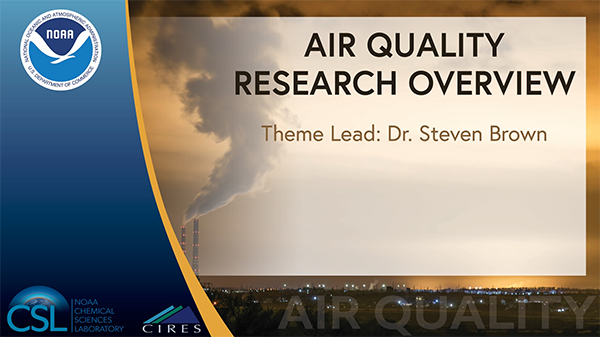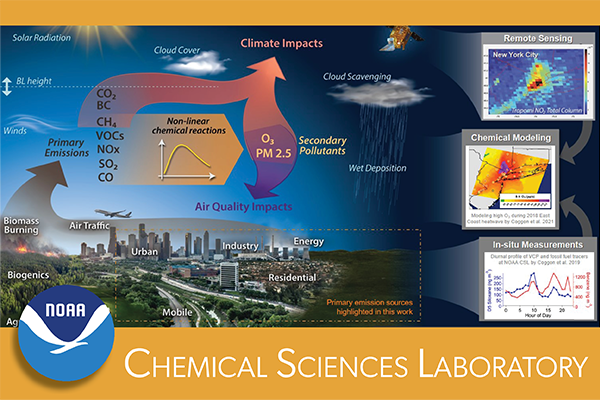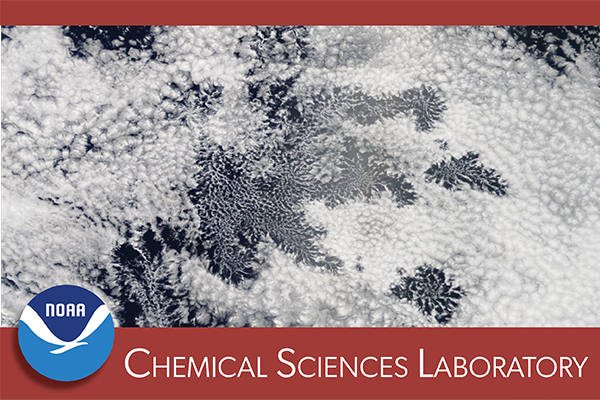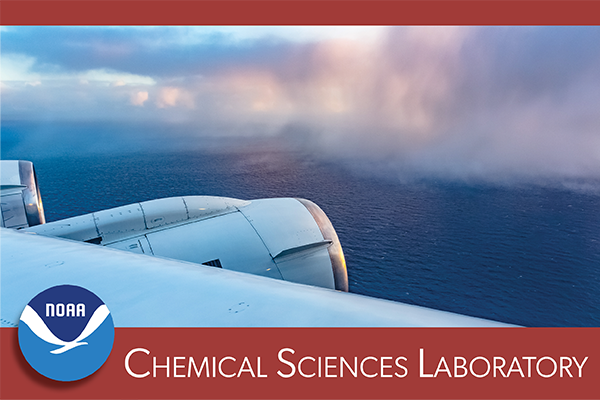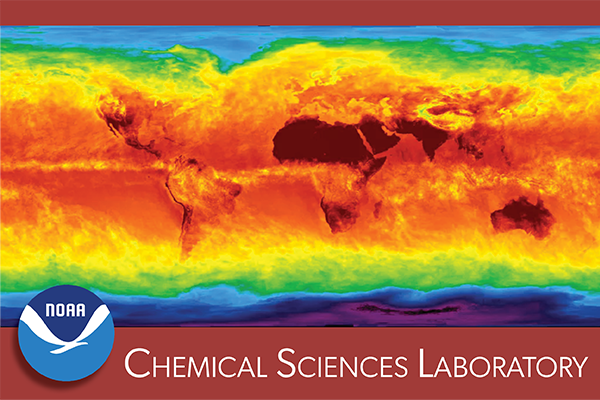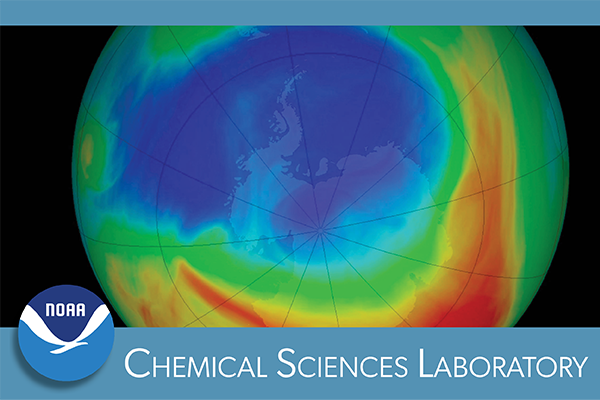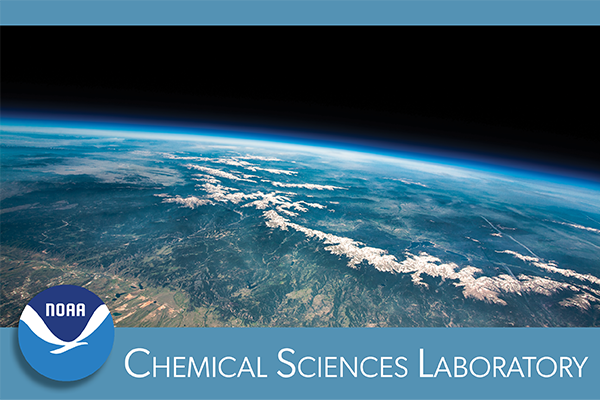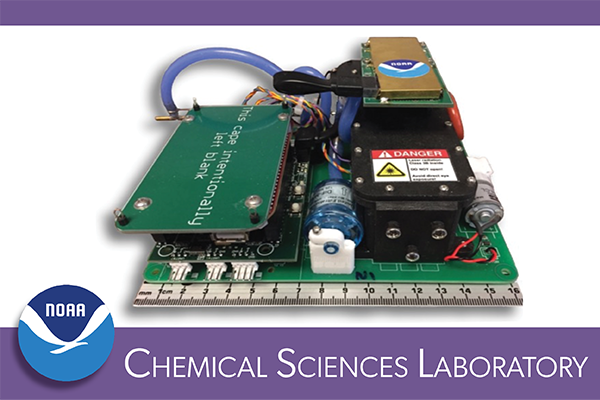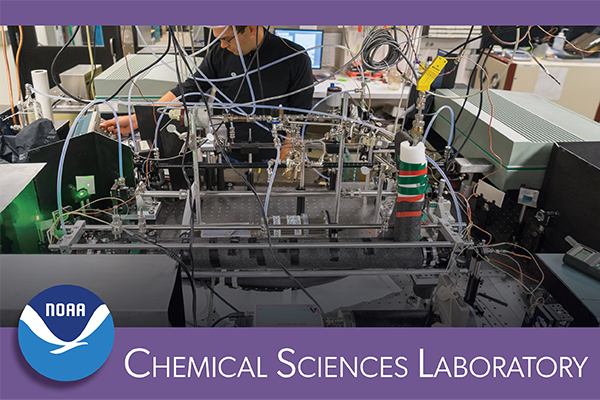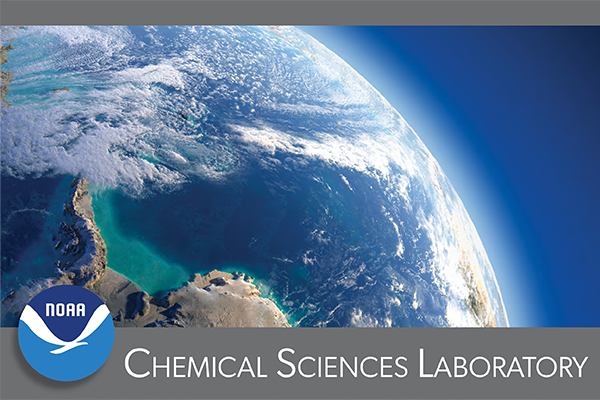CSL Science Review
23 - 25 February 2021 • Boulder, Colorado

Laboratory science reviews are conducted periodically to evaluate the quality, relevance, and performance of research conducted in Oceanic and Atmospheric Research (OAR) laboratories. This review is for both internal OAR/NOAA use for planning, programming, and budgeting, and external interests. It helps the Laboratory in its strategic planning of its future science. These reviews are also intended to ensure that OAR laboratory research is linked to the NOAA Strategic Plan, is relevant to NOAA Research mission and priorities, is of high quality as judged by preeminence criteria, and is carried out with a high level of performance.
This review will be held virtually and covers the research of the Chemical Sciences Laboratory (CSL) from 2015 to the present.
Research Themes
CSL air quality research has three focal points: (1) characterizing emissions and emission trends; (2) understanding chemical, physical, and radiative processes that influence atmospheric composition (i.e., air quality); and (3) understanding atmospheric transport processes from local boundary layers to long-range (e.g., global; stratospheric) flows. Air quality research encompasses directly emitted pollutants, such as carbon monoxide (CO), as well as ozone (O3) and particulate matter (PM2.5), which are formed by complex chemical reactions in the atmosphere that are influenced by atmospheric composition, physical parameters (e.g., temperature; humidity, sunlight), and mixing and transport. Moreover, poor air quality typically had been considered a summertime phenomenon, but CSL research has shown that colder weather and nighttime chemistry also contribute to air quality degradation.
Emissions from the transportation sector have primarily been responsible for contributing to poor air quality. However, those emissions have been substantially reduced by regulation, and now other sources, such as volatile chemical products (VCPs) are becoming relatively more important. These newly recognized sources influence the chemistry of ozone and PM2.5 formation and require new research strategies (e.g., advanced analytical instrumentation) to understand. A warming climate has also contributed to air quality issues with more frequent large wildfires, especially in the western U.S., that emit massive quantities of species (e.g., aerosols, CO, nitrogen oxides) that degrade air quality locally, but also transform chemically during transport and degrade air quality in regions far downwind.
To more fully understand the chemical and physical processes responsible for changes in air quality, simultaneous deployment of a large suite of measurements is critical, including those for gas phase species, aerosol species, and physical parameters. While CSL has extensive measurement capabilities, to reach the scientific objectives of field missions, such as the Fire Influence on Regional to Global Environments and Air Quality (FIREX-AQ) study, CSL actively engages in collaborations with other organizations. To fulfill mission objectives CSL also utilizes different types of sampling platforms, including aircraft, ships, mobile vans, and unmanned aircraft systems (UASs).
Understanding atmospheric transport and mixing processes is essential for improving air quality predictive capabilities, but measurements of these processes are difficult. CSL research into developing and deploying remote sensing instruments has proven critical in advancing this understanding. On regional and larger scales, O3 lidar has demonstrated that long-range transport in both horizontal and vertical dimensions can be a significant factor in local air quality exceedances of O3. Doppler lidars have been developed and deployed at CSL that measure wind fields in complex terrain. These observations, for example, inform the placement of wind turbines for renewable energy production. Smaller Doppler instruments have been developed for aircraft and are used to determine complex flows in urban areas and coastal regions.
CSL research improves the predictive capability that is essential for air quality management and forecast applications, including a demonstrated capability in working with stakeholders to identify their needs up front, and then communicating research results to air quality decision-makers in a timely, user-friendly manner. For example, national policy, such as the push to increase domestic energy production via oil and natural gas development, has led to significant impacts on regional and local air quality. CSL research is addressing this and other emerging air quality issues through laboratory studies, instrument development activities, intensive field studies coupled with model analysis, and providing the resulting scientific information to users.
CSL climate research has two focal points: (1) understanding aerosol interactions in the climate system; and (2) characterizing the emissions, transport, transformations, and distribution of key climate species. CSL climate research results in an increased understanding and quantification of the radiative, chemical, and dynamical processes that influence climate with a goal of reducing major uncertainties in climate models and, hence, improving our understanding of our current climate and confidence in future climate projections.
Aerosols and their interactions in the climate system are the greatest uncertainties in our ability to model the current and future climate system. The role of aerosols in the climate system is multifaceted, requiring sophisticated instrumentation to measure various parameters such as size distribution, mass, aerosol optical depth, composition, scattering, and absorption. Observations and modeling of aerosols are critical in order to quantify the transport (regionally/globally) and distribution of aerosols that absorb solar radiation and warm Earth's atmosphere (e.g., black carbon) and scatter solar radiation and cool Earth's surface (e.g., sulfate aerosols), including delineation of new chemical pathways for marine sulfate aerosol formation. Observations and modeling also contribute to understanding the climate impacts of aerosols that are not yet well understood (e.g., secondary organic aerosols). Aerosols also play an important role in the climate system due to aerosol-cloud interactions. The influence of aerosols on regional cloud formation, extent, optical properties (Earth's radiation budget, ERB), and precipitation is a continuously evolving field of research. Remote and in-situ observations from the surface, aircraft, ships, and satellites in conjunction with models and machine learning are used to improve the understanding of cloud systems and microphysical processes in order to reduce the uncertainty in determining how aerosol-cloud interactions impact the climate system.
CSL climate research also addresses other key climate species including tropospheric ozone, methane, substitutes for ozone-depleting substances (including hydrofluorocarbons, HFCs), and others. These species contribute directly to climate forcing, influence many climate feedback processes, link climate change and air quality, and are areas of current focus for policy formulation. The distribution and transport of tropospheric ozone influences regional and global climate and ozone is an important trace species for testing climate models. Quantification of the emissions and distribution of chemically active greenhouse gases such as methane is critical in understanding regional and global climate change. Laboratory and modeling studies of solvent and refrigerant replacement chemicals are used to estimate their climate impacts. Observations and modeling of water vapor in the upper troposphere and lower stratosphere (UT/LS) increase our understanding of water vapor's abundance and distribution, which is a critical factor in determining the amount of radiation lost to space and thus determining the energy budget of Earth's surface (also addressed under stratospheric research).
CSL climate research is advancing scientific knowledge, contributing to national and international assessments, and is disseminated to stakeholders. CSL was a lead participant in the 4th US National Climate Assessment, the scientific state-of-understanding assessment report for decision-makers.
CSL stratospheric research has four focal points: (1) studying the relationship between climate change and changes in the stratosphere; (2) examining the chemistry, composition and transport features of the upper troposphere and lower stratosphere; (3) developing and using instrumentation to measure key species such as ozone, black carbon, aerosol composition, water vapor, and sulfur dioxide in the stratosphere; and (4) developing and using atmospheric models to understand the dynamical coupling of the stratosphere and troposphere.
There is strong evidence that climate change and changes in the stratosphere are related. Examples of this include the connection between the recovery of the stratospheric ozone layer and climate change, connections between increases in stratospheric water vapor and surface temperature changes, and changes in stratospheric circulation that influence, and are influenced by, climate change. It is also clear that stratospheric changes affect surface weather. For example, sudden stratospheric warming events in Arctic winter can induce extreme cold-air outbreaks over large regions at the Earth's surface. Finally, the stratosphere has become a focal point for climate intervention strategies.
After decades of study, there is still much to learn about the chemical composition of the stratosphere and the chemical and physical processes that occur in this upper region of the atmosphere. In large part, these gaps of understanding are due to the difficulty of obtaining high quality observations. CSL has had long-standing collaborations with NASA to instrument high-flying aircraft to study stratospheric aerosol, ozone, and water vapor. The interest in understanding the chemistry and budget of sulfur in the stratosphere is increasing. Historically, research opportunities for this work came about from major volcanic eruptions. Currently there is much discussion of intentional release of sulfur species to the stratosphere to enhance sulfate aerosol abundance and mitigate global warming. Policy decisions of whether or not to implement these interventions would benefit from a full scientific understanding of the stratospheric sulfur cycle in order to determine the optimal approach and what unintended consequences may arise.
With state-of-the-art instrumentation and inventive collaborative approaches for in-situ sampling, CSL is advancing the scientific understanding of the stratosphere. These cutting-edge observational activities are intimately linked to advanced numerical modeling approaches used by CSL scientists. CSL modeling research uses in-situ and satellite data, as well as reanalyses of existing data, to further understand the causes and consequences of changes in stratospheric composition and dynamics that affect climate, weather, and climate intervention proposals.
CSL makes ongoing contributions to (1) advancing scientific knowledge regarding the processes involved in ozone-layer depletion by chlorofluorocarbons and other compounds, (2) assessments of the state of knowledge regarding stratospheric ozone, and (3) communication of that information to policymakers in formats that are useful to their decision-making process. For example, CSL continues its long tradition of co-leading state-of-understanding scientific assessment reports of stratospheric ozone depletion for decision-makers, a role it has played since the inception of the United Nations Montreal Protocol, the 1987 international agreement that protects the ozone layer. U.S. policy makers, the U.S. chemical industry, EPA, and other national and international agencies rely on these scientific assessments as a basis for development of scientifically sound, well-informed policies.
Reviewers
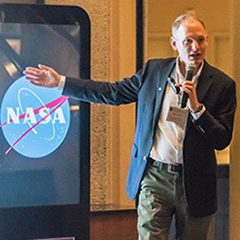
Dr. Barry Lefer (Review Panel Chair)
Tropospheric Composition Program Manager
NASA Earth Science Division
Washington, DC, USA
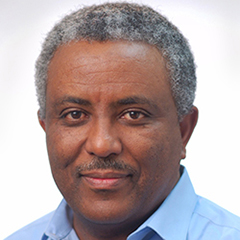
Dr. Belay Demoz
Director of Joint Center for Earth Systems Technology
University of Maryland Baltimore Country
Baltimore, MD, USA

Prof. Emily Fischer
Associate Professor
Department of Atmospheric Science
Colorado State University
Ft. Collins, CO, USA
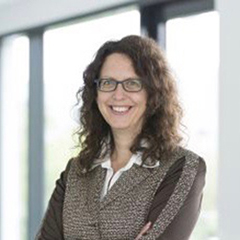
Prof. Dr. Astrid Kiendler-Scharr
Director of Institut für Energie and Klimaforschung (IEK-8)
(Institute for Energy and Climate Research)
Forschungszentrum (Research Center) Jülich GmbH
Jülich, Germany
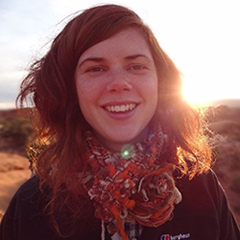
Prof. Dr. Amanda Maycock
Associate Professor in Climate Dynamics
Institute for Atmospheric and Climate Science (ICAS)
School of Earth and Environment
University of Leeds
Leeds, UK

Dr. Paul Newman
Chief Scientist for Earth Sciences
Atmospheric Chemistry and Dynamics Laboratory
NASA Goddard Space Flight Center
Greenbelt, MD, USA

Dr. Brad Pierce
Director, Space Science and Engineering Center
Professor, Atmospheric and Oceanic Sciences Department
University of Wisconsin
Madison, WI, USA
Participating Stakeholder and Line Office Representatives
As part of the CSL Science Review, the Review Panel conducts closed discussions with various stakeholders to get additional input about the Laboratory's science, products, and services from key customers. The stakeholders participating in the 2021 CSL Science Review are:
- Ping Chen, Co-Founder and CEO, Handix Scientific
- Toshihiro Kuwayama, Air Resources Supervisor, California Air Resources Board
- Cindy Newberg, Director of the Stratospheric Protection Division, Environmental Protection Agency
- Gordon Pierce, Program Manager, Colorado Department of Public Health and Environment
- Kelly Wanser, Executive Director, SilverLining NGO
- Steve Wofsy, Abbott Lawrence Rotch Professor of Atmospheric and Environmental Science, Harvard University
An important part of the 2021 CSL Science Review is the opportunity for CSL management to discuss its science, products, and services with representatives from NOAA Line Offices. The discussion enhances collaborations across Line Offices to further the NOAA Mission. The Line Office representative participating in the 2021 CSL Science Review are:
- Felipe Arzayus, Biologist, Stressor Detection and Impacts Division, National Centers for Coastal Ocean Science, National Ocean Service
- Michael Fuller, Flag Lieutenant to Director, Office of Marine and Aviation Operations
- Mitch Goldberg, Senior Scientist, National Environmental Satellite Data and Information Service
- Philip Hall, Director, Uncrewed Systems Research Transition Office, Office of Marine and Aviation Operations
- Nancy Hann, Deputy Director, Office of Marine and Aviation Operations
- Conor Maginn, Pilot, Aircraft Operations Center, Office of Marine and Aviation Operations
- Gary Matlock, Deputy Assistant Administrator, Oceanic and Atmospheric Research
- Ivanka Stajner, Deputy Director, Environmental Modeling Center, National Weather Service
- Peter Thompson, Chief, Stressor Detection and Impacts Division, National Centers for Coastal Ocean Science, National Ocean Service
Agenda
Tuesday 23 February 2021
| 07:30, 9:15 MST | Welcome and Overview | |
|---|---|---|
| 07:30 | Welcome and Introductions | David Fahey |
| 07:40 | NOAA OAR Overview NOAA OAR Portfolios Overview | Gary Matlock Wayne Higgins |
| 08:20 | CSL Overview | David Fahey |
| 09:00 | Questions & Answers (Q&A) with Review Panel | |
| 09:15, 09:30 MST | Break | |
| 09:30, 11:15 MST | 1. Research Theme: Air Quality | |
| 09:30 | Air Quality Research Overview | Steven Brown |
| 09:45 | 1.1 Air Quality: Emissions to Impacts Discussion and Q&A with Review Panel | Jessica Gilman, Brian McDonald, Caroline Womack |
| 10:15 | 1.2 Wild and Prescribed Fires: from Lab to Field Discussion and Q&A with Review Panel | Joshua Schwarz, James Roberts, Matthew Coggon |
| 10:45 | 1.3 Atmospheric Composition, Chemistry, and Dynamics Discussion and Q&A with Review Panel | Gregory Frost, Alan Brewer, Claire Granier, Kai-Lan Chang |
| 11:15, 11:30 MST | Break | |
| 11:30, 12:00 MST | Review Panel Discussion (closed) | |
Wednesday 24 February 2021
Thursday 25 February 2021
| 07:30, 9:25 MST | 4. Research Strategies | |
|---|---|---|
| 07:30 | Research Strategies Overview | Patrick Veres |
| 07:45 | 4.1 Innovative Instrumentation Discussion and Q&A with Review Panel | Ru-Shan Gao, Pamela Rickly, Sunil Baidar, Steven Ciciora |
| 08:10 | 4.2 Laboratory Studies Discussion and Q&A with Review Panel | James Burkholder, Aparajeo Chattopadhyay, Andy Neuman, Daniel Van Hoomissen |
| 08:35 | 4.3 Field Campaigns Discussion and Q&A with Review Panel | Carsten Warneke, Ann Middlebrook, Christoph Senff, Kenneth Aikin, Raul Alvarez |
| 09:00 | 4.4 Model Development and Applications Discussion and Q&A with Review Panel | Jan Kazil, Rebecca Schwantes, Megan Bela |
| 09:25, 09:30 MST | Closing Remarks | David Fahey |
| 09:30, 09:40 MST | Break | |
| 09:40, 12:00 MST | Stakeholder, Line Office Discussions & Closing | |
| 09:40 | Concurrent Review Panel, Stakeholder Discussions (Closed) | |
| 09:40 | Concurrent NOAA Line Office Representative Meeting (Closed) | |
| 10:30 | Review Panel Discussion (Closed) | |
| 11:30 | Review Panel Report Out Sessions with OAR and CSL Leadership (Closed) | |
Overview Presentations
StoryMap Presentations
1. Research Theme: Air Quality
2. Research Theme: Climate
3. Research Theme: Stratosphere
4. Research Strategies
5. Leadership & Contributions
Documents
Guiding Documents
- DOC Strategic Plan 2018-2022
- NOAA's Next-Generation Strategic Plan [ Executive Summary ]
- NOAA Research & Development Vision Areas 2020-2026
- NOAA Science & Technology Focus Areas
- NOAA OAR Strategy 2020-2026
CSL Planning Documents
- CSD Strategic Research Plan 2015-2020
- CSL Annual Operating Plans & R2X 2015-2020
- CSL Strategy 2021-2026
Prior Science Review
Supplemental Documents
- CSL Bibliometrics Report 2015-2020
- CSL Peer-Reviewed Publications 2015-2020
- CSL Awards, Honors, and Other Recognition
- CSL Leadership Roles
- CSL Outreach, Communication, Education
- CSL Staffing & Demographics
- CSL Funding & Expenses
- CSL Technology Transfer & Patents
- Effective Communication through Digital Storytelling - an overview of Esri ArcGIS StoryMaps
Post Review Documents
- 2021 NOAA CSL Review Summary Report
- 2021 NOAA CSL Response to Panel Review Recommendations

